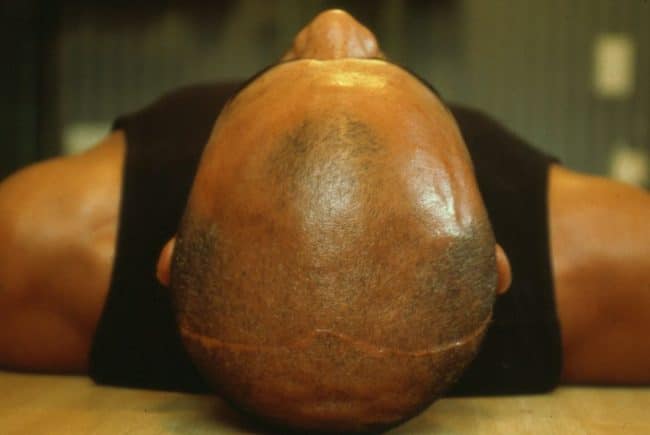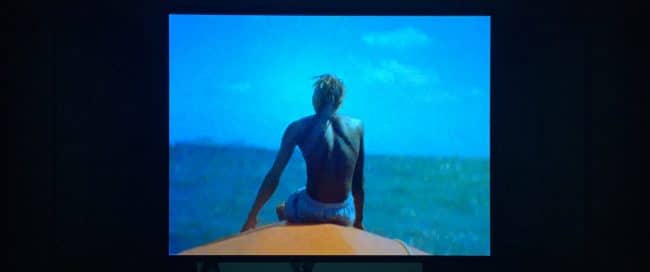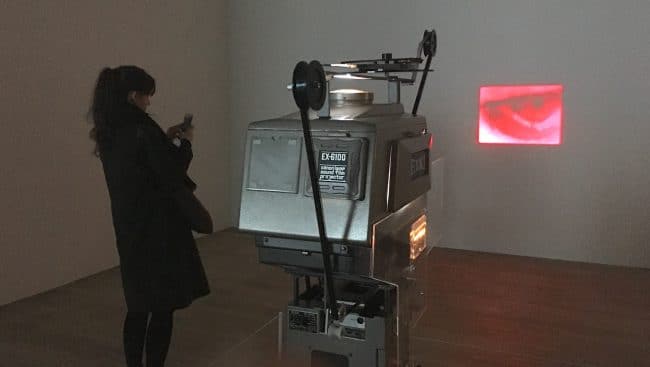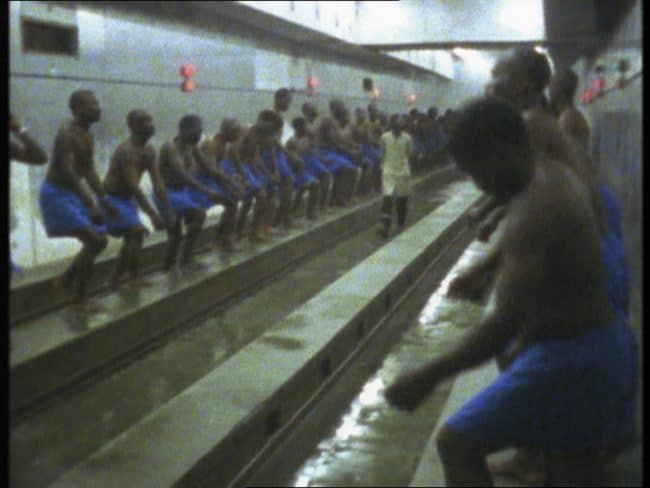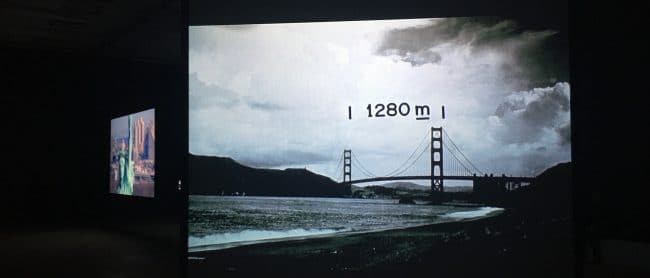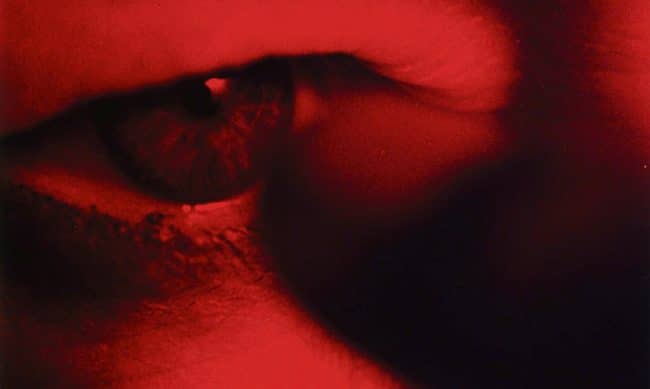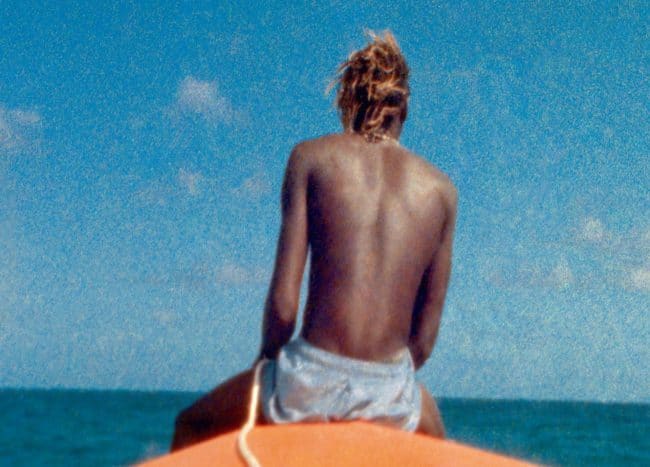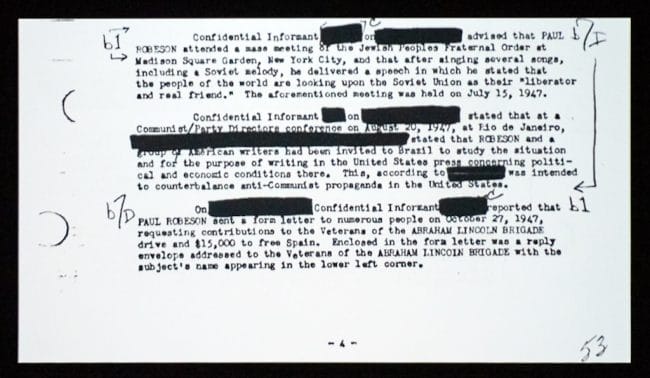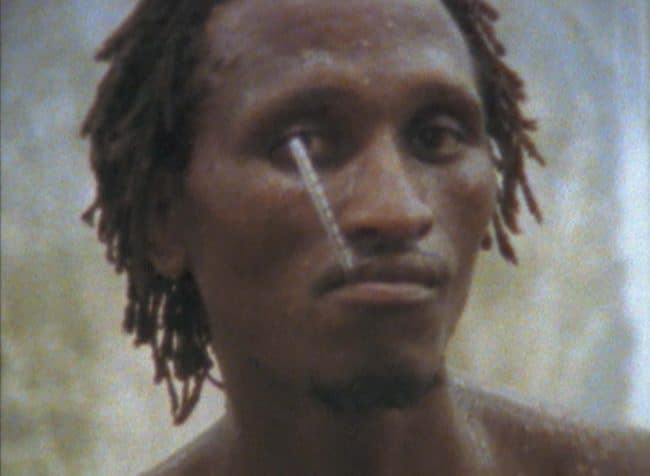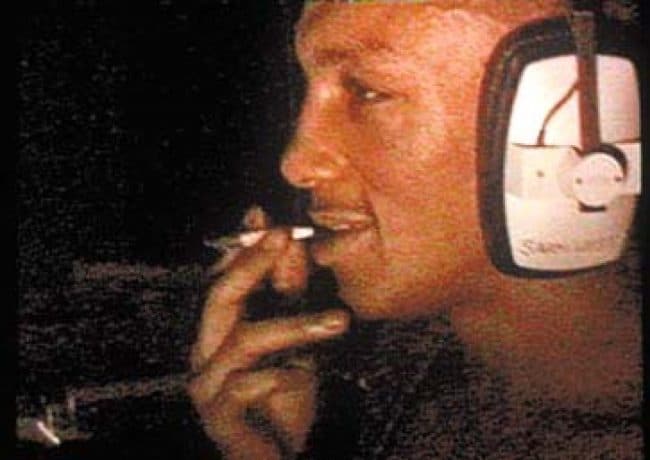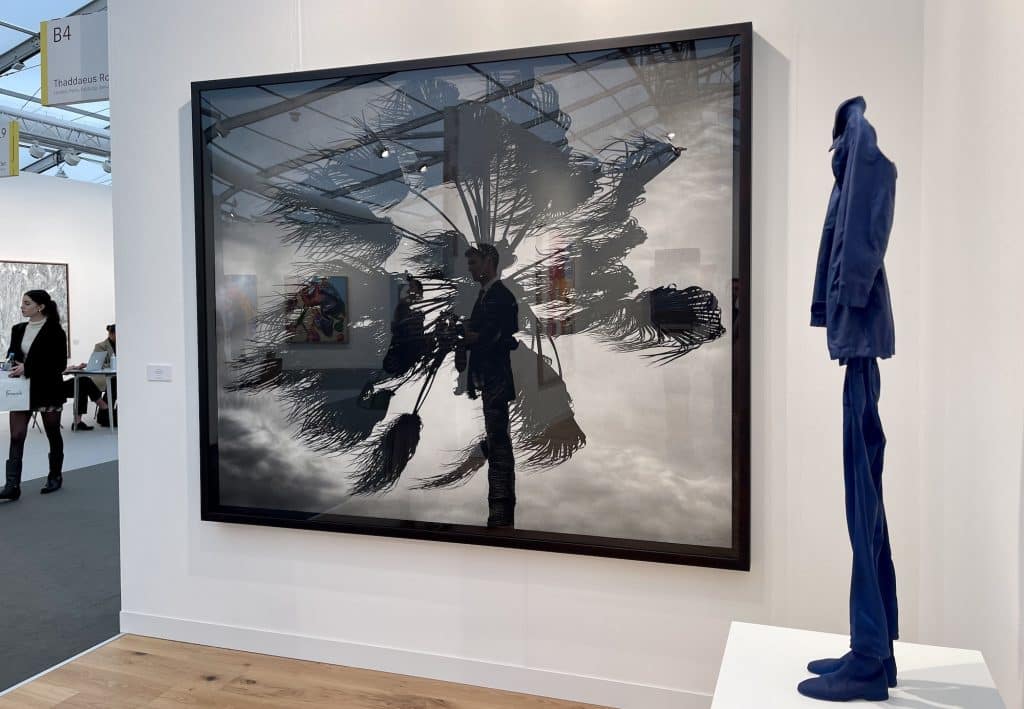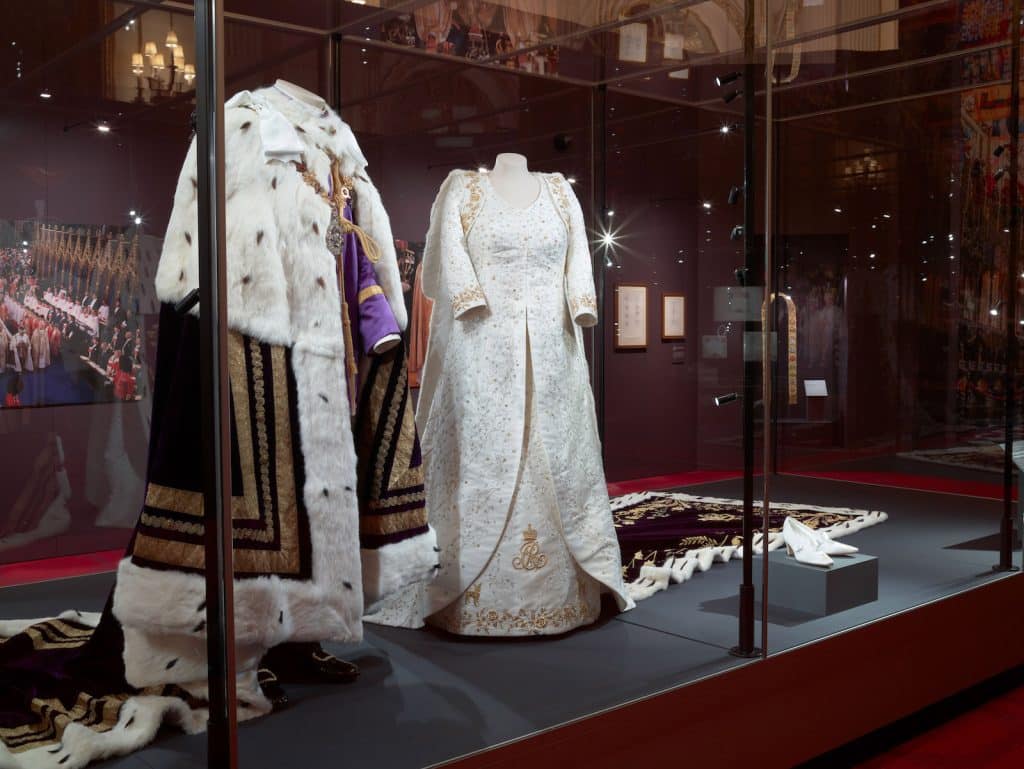This Steve McQueen Tate Modern exhibition reminds us that although he is now familiar to us for his critically acclaimed films his first works originate in contemporary art. His films for cinematic release of course include the Oscar-winning 12 Years a Slave (2013) but he has also made Hunger (2008), Shame (2010) and Widows (2018).
Less widely known, was that well before this, McQueen was a highly regarded visual artist, winning the Turner Prize in 1999. It is this side of his output that precedes Steve McQueen Tate Modern in an exhibition that features 14 major works spanning film, photography and sculpture.
Steve McQueen Tate Modern is the first survey of his work in the UK for over 20 years, offering a timely opportunity to experience the depth of McQueen’s visual art career in this country for the very first time.
The single sculpture is Weight 2016, a forgettable sculpture first exhibited at the recently closed Reading Gaol. Presenting a gold-plated mosquito net draped over one of the prison’s metal bed-frames to create a shimmering apparition. Weight unsuccessfully ’explores the relation between protection and confinement, the physical and the spiritual’.
Much more interesting are his films, which vary in duration from a few minutes to over 5 hours. They also vary in presentation; some shown in darkened rooms by timed entrance, others on huge projected screens, and yet more on grainy super 8 projected on to the walls.
What all the works in Steve McQueen Tate Modern share, are a powerful determination to show life as it is. The human body, including the artists own, are filmed in unflinching detail. As and when required we are exposed to unconfortable intimacy, extreme physical duress, emotional and psychological pressure, all filmed with an often uncomfortable sense of proximity and engagement.
Despite reflecting output over some 25 years, the films are not arranged in any chronological order, and there is tacit encouragement to take in the films in any order in the open plan arrangement of the gallery exhibits as well as to re-view and re-examine them. There are unfortunately significant gaps such as the pre-1999 works created for the Turner Prize and many recent works, but the exhibition nevertheless spans the artists practice well.
One of the first works encountered is Once Upon a Time (2002), replaying the bizarre images sent in to space by NASA in 1977 reflecting a utopian world strangely free of poverty, disease and conflict accompanied by an unintelligible invented language.
Alongside is Static (2009), a deliberately un-static and disorienting close-up portrait of the Statue of Liberty filmed from a moving helicopter.
In the red-tinted short Charlotte (2004) the actress Charlotte Rampling has her eye pushed and prodded by the artist whilst, shown opposite in Cold Breath, McQueen does the same to his own nipple first gently and then with unexpected violence.
The film installation Ashes shows a two-sided story on two sides of a screen. One side is a joyful ride on a fishing boat bobbing in the sunny Caribbean, the other features preparations for a funeral. Ashes, the male subject was sadly caught up in a deadly drugs deal.
The black singer and activist Paul Robeson, or more specifically the record of his 30 year FBI surveillance, is the subject of the mediocre End Credits. Secret documents run on the screen for an unwatchable 5 hours with a deadpan commentary listing all the redactions.
The masterpiece of the exhibition is undoubtedly the dark and intensely claustrophobic Western Deep (2002) – a journey down in to the world’s deepest gold mine. From the start we are plunged into intense darkness with just overbearing sound of the rattling mineshaft lift. In grainy Super 8 faces flicker in and out of the picture before the cage arrives deep underground.
We smell the sweat and feel the heat as the miners labour in the roar of heavy machinery. Sometimes there are sudden silences or bright lights, each as uncomfortable as the intense darkness or unbearable noise. We cannot help but be transported into the daily working hell of the miners. It is a shocking and visceral experience.
McQueen’s work does not always succeed quite enough to engage us in a gallery setting, however you cannot question the commitment of the artist to his expression of the often harsh and troubling realities of life, and the revelations of inequality, untruth or injustice. Even if only part of the exhibition hits home, it is nevertheless essential viewing.
Steve McQueen Tate Modern is in London, until 11 May 2020
For more information visit Steve McQueen Tate Modern





